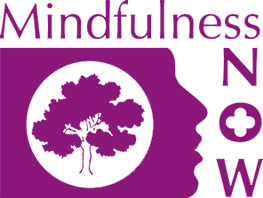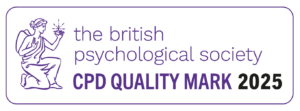Think of the time you ate your lunch today or yesterday. Did you stop to look at the colours and shades in your food? Did you notice it’s aroma? Were you aware of the texture and taste of the food in your mouth as you slowly chewed? Were you aware of how it felt to swallow the food? What aftertaste was there?
One of the attitudes of mindfulness, beginner’s mind offers us the chance to really slow down, ‘smell the coffee’ and start to appreciate everyday activities with new eyes, new senses, almost as if for the first time. And each and every time we do this, we’re applying what we have learned in our formal meditation practice (the time we take just to sit or lie and practice meditation) to our everyday activities. The formal practice is about learning to pay attention to whatever is going on in our mind, body and the world around us, moment by moment, in a non-judgemental, kindly and gentle way. We can then take this focused attention into our normal everyday lives, bringing a full awareness to our experience of the world and the ways in which we interact with it.
Often we spend much of our time lost in thought, rushing around from one activity to another, and often trying to do several different things at the same time. This constant busyness is at the root cause of much of our unhappiness, anxiety and exhaustion. However, we can switch over from this doing mode of mind into a gentler, more peaceful being mode. We can do this through practising everyday ‘informal’ mindfulness. Our lives offer numerous opportunities for this type of everyday mindfulness practice. Here are just five ways of doing it:
1. First thing
As you wake up, rather than immediately opening your eyes why not keep them closed for a short while and spend a little while just noticing your breathing. Not trying to change your breathing but just being aware as you let this awareness extend to the sensations in your body – and then outside your body – how does the duvet feel around you and the pillow beneath your head? What does the bed linen smell like? What sounds are you aware of from indoors and out? Just spend a little while really noticing as much as you can – spending a few moments before you get up. Gradually open your eyes and slowly take in everything you can see.
2. Wake up and smell the coffee
The say that a watched kettle does not boil but you may just discover that if you are mindful enough, it actually does! Why not make a mindful experience out of preparing and enjoying a cup of coffee. If you grind the beans, notice the feel of some coffee beans in your hand, smell them and drop them into the grinder. Listen to the sound of the grinder and then smell the ground beans. How do they differ from the un-ground ones?
Notice what it is like to fill the kettle and watch and listen as it boils. Pour the boiling water through the coffee and watch and smell as it percolates. Eventually watch and smell the filtered coffee as you pour it into your cup. It may just be the best cup of coffee you have ever tasted!
3. Travelling to work
If you are travelling by bus or train to work, rather than reading or looking at your phone why not just take the time to really notice everything around you. See it all as if through beginner’s eyes – as if it was all for the first time. Notice the movement, the smells and sounds around you. If you feel comfortable with this, and are not in danger of missing your stop, why not close your eyes for a while and just explore all the sounds that come into your awareness. It can be a very different experience.
4. Another kind of listening
The next time you are having a conversation at work why not make it a very different kind of experience. One where you really listen to what the other person has to say rather than concentrating on your own internal thought stream. Try avoiding that tendency to think about your response in advance, while the other person is still speaking! Try being more attentive than normal to the other person’s conversation, in a non-judgemental and empathic way. Watch the other person’s body language and learn from it.
5. During your working day
Whatever your day is like why not take just a few moments every now and again to take a few mindful breaths, even if it is just noticing one breath, it can have a really beneficial effect, slowing you momentarily and allowing you to enter being mode, even if it is for a few brief moments!
Maybe you could set a few reminders for yourself at regular intervals during the day, no matter how busy you are to briefly switch off from relentless doing and just be aware in the present moment. The rest of your day is likely to be so much more productive as a result.
Notice how helpful it can be by introducing a few informal mindfulness practices into your daily life you can learn to trigger your mind/body’s relaxation response and let go of unhelpful and potentially harmful stress. If you start with just one practice you are likely to be tempted to do much more.
By Nick Cooke





